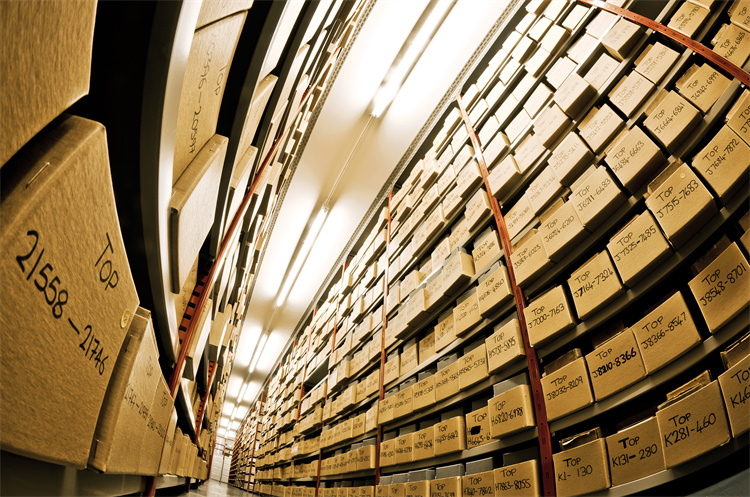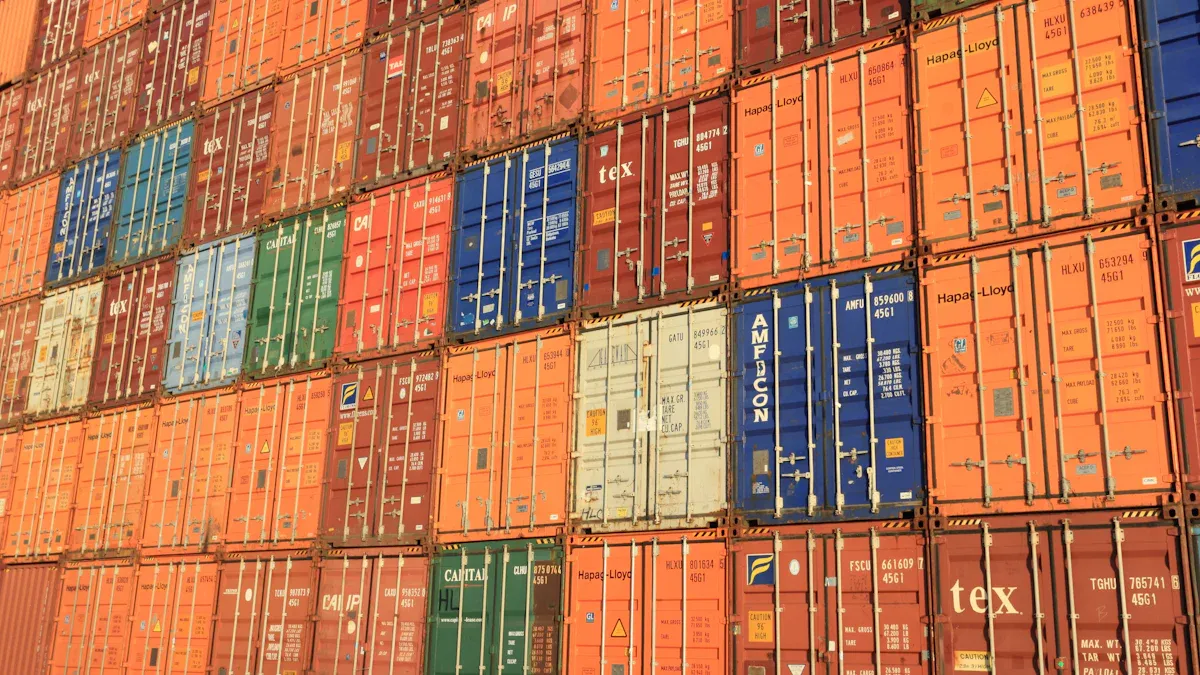What Tariffs Mean for International Trade and Commerce

Tariffs are taxes on goods brought into a country. They help local businesses but can upset global trade. For example, tariffs on parts raise costs for factories, which impacts on imports and makes them less competitive. In 2018-2019, 25% of US exporters saw higher tariffs. These affected over 80% of exports and many factory jobs. Tariffs change imports, exports, trade, and what people pay for goods.
Key Takeaways
Tariffs are taxes on goods brought from other countries. They can make things cost more and impact local businesses. Knowing their effects helps manage expenses.
Countries use tariffs to help local businesses and earn money. This can make imported items more expensive, changing what people buy.
Businesses can handle tariffs by preparing for changes, making good partnerships, and using information to decide wisely.
Understanding Tariffs and Their Role in Trade

What Are Tariffs and Import Tariffs?
Tariffs are taxes on goods crossing country borders. These taxes can apply to imports or exports, but export tariffs are rare. Import tariffs are for goods entering a country. Customs officials collect these taxes before goods are allowed in.
Import tariffs have two main purposes. They raise money for governments and protect local businesses from foreign competition. For example, a country might tax imported steel to help its own steel industry.
There are three kinds of import tariffs:
Specific tariffs: A set fee per product unit, like $5 per ton of steel.
Ad valorem tariffs: A percentage of the product's value, like 10% of a car's price.
Compound tariffs: A mix of specific and ad valorem tariffs.
These types help countries adjust trade policies to meet their goals.
Why Do Countries Impose Tariffs?
Countries use tariffs for different reasons. Some protect local industries, especially those important for national safety. Others use tariffs to change foreign trade practices or to earn government income.
Reason | Explanation |
|---|---|
Protect local industries | Helps local businesses compete with foreign ones. |
Change foreign practices | Pushes other countries to adjust their trade methods. |
Raise government income | Brings money into the government. |
Support local industries | Grows local businesses and creates jobs. |
Fight unfair trade | Responds to unfair trade actions by other countries. |
For example, a tariff might make imported goods cost more, so people buy local products instead.
Types of Tariffs and Their Applications
Tariffs differ by region and industry. Groups like the World Trade Organization (WTO) and the Harmonized System (HS) organize tariffs to help countries manage trade.
Source | Purpose |
|---|---|
World Trade Organization (WTO) | Explains tariff differences and rules for member countries. |
Harmonized System (HS) | Standardizes product categories for easier tariff comparisons. |
These systems ensure tariffs follow global trade rules. For instance, a country might use a specific tariff on farm goods to help farmers. An ad valorem tariff could be used on luxury items to collect more money.
Impacts on Imports, Exports, and Global Trade Dynamics

Effects of Tariffs on Importing Countries
Tariffs raise the price of imported goods. This makes foreign items cost more, so people buy local products instead. While this helps local businesses, it can cause problems. Higher import costs make production more expensive for companies using foreign materials. This can hurt their ability to compete globally.
Customs processes also get harder with tariffs. Different tariff rates for similar goods can cause mistakes. These errors lead to delays and extra costs. For example:
Strict customs checks, like the red lane, slow down shipments.
Simple tariff systems make customs faster and cheaper.
These issues can reduce global trade and harm partnerships between countries. Grossman et al. (2021) explain that tariffs disrupt supply chains. Companies must change how they get materials and make products. These changes take time and delay economic benefits.
How Tariffs Influence Exporting Countries
When one country adds tariffs, others often respond with their own. These retaliatory tariffs lower demand for exports, especially in farming and factories. For example, in 2018-2019, U.S. farmers lost income due to retaliatory tariffs. Over 25% of U.S. exporters faced higher tariffs, affecting 80% of exports and many factory jobs.
Exporting countries also lose buyers when tariffs raise their prices. Foreign customers may switch to cheaper suppliers. This weakens the exporting country's economy, especially if it depends on certain industries. Blanchard et al. (2017) note that while tariffs may help local production briefly, they hurt exporting countries by making them less competitive.
Impacts on Businesses and Consumers
Tariffs act like a tax on imports. Businesses often pass these costs to shoppers, raising prices. This makes everyday items more expensive for families. For instance, the Tax Foundation found that 2002 tariffs raised prices and caused job losses. Similarly, the NBER (2019) reported that U.S. tariffs on washing machines increased prices by 12%, costing $1.5 billion.
Tariffs also raise production costs for businesses. This lowers profits and limits growth. Shoppers, expecting higher prices, may spend less, slowing the economy. The University of Michigan found inflation expectations rose to 4.9% due to tariffs.
Evidence Type | Description |
|---|---|
Tax Foundation Study | Tariffs in 2002 raised prices and caused job losses. |
NBER Study (2019) | Washing machine tariffs raised prices by 12%, costing $1.5 billion. |
Inflation Expectations | Tariffs caused inflation worries, reducing spending. |
In the end, both businesses and families feel the effects of tariffs. Companies struggle to compete, and families have less money to spend. These impacts show how tariffs affect the whole economy.
Broader Implications of Tariffs and Trade Wars
The Role of Tariffs in Trade Wars
Tariffs are often the start of trade wars. When one country adds tariffs, others may respond with their own. This creates a cycle of economic tension. For example, in the 1960s, Europe taxed U.S. poultry, starting the "Chicken War." The U.S. fought back with tariffs on European goods, hurting industries like cars. Similarly, in 2018, the U.S.-China trade war had both sides taxing each other's goods, disrupting global markets.
History shows tariffs can make conflicts worse. The "Banana War" between the U.S. and Europe lasted nearly 20 years. It began with Europe taxing Latin American bananas and ended with U.S. tariffs on European goods. These fights hurt industries and shoppers. In 2002, U.S. steel tariffs led to Europe threatening retaliation. This caused problems for businesses needing steel.
Trade wars from tariffs often raise prices and slow economies. A 2018 study showed steel tariffs caused job losses in industries using steel. These jobs outnumbered steel-making jobs by 80 to 1. These examples show how tariffs can lead to long-lasting trade fights that harm economies worldwide.
Shifts in Global Supply Chains Due to Tariffs
Tariffs make companies change how they get materials. Higher costs make imports from some countries too expensive. Businesses must act fast to avoid losing money. For example, Apple responded to 2018 tariffs by making products in Vietnam and India. This reduced its reliance on one country.
Many companies now work with suppliers to solve tariff problems. A study found 50% of supply chain leaders team up with partners to handle tariffs. Some switch to cheaper materials to avoid high costs. For instance, an electronics company moved factories to countries with lower tariffs. This helped keep prices competitive despite trade issues.
Technology also helps businesses adapt. Companies use tools like AI to plan better and cut risks. These tools predict demand and manage supplies. But rising tariffs create uncertainty, making it hard to plan long-term. Companies must stay flexible to handle these challenges.
Long-Term Economic Consequences of Tariff Policies
Tariffs have lasting effects on the world economy. They raise prices, cut trade, and slow growth. History shows tariffs often fail to meet their goals. A 2018 study found tariffs didn’t lower Chinese import prices. Instead, U.S. businesses paid the extra costs.
Economic models show tariffs hurt growth. They reduce imports and exports, leading to fewer jobs and lower incomes. A 2018 survey found no experts believed tariffs would help U.S. welfare. Instead, they warned of higher costs for families. On average, tariffs add $625 in taxes per U.S. household each year. This doesn’t include hidden costs like fewer choices and lower incomes.
Retaliatory tariffs make things worse. They harm trade relationships and create uncertainty for businesses. Over time, these policies weaken cooperation between countries. Lower tariffs and fair agreements could improve global trade. But this needs careful planning and negotiation.
Tariffs affect more than just trade. They change supply chains, hurt economies, and strain global relationships. Leaders must think about these effects when creating tariff policies.
Navigating Tariff Challenges with JUSDA and JusTrade
How JusTrade Makes Customs Clearance Easier During Tariff Changes
Tariffs can make customs clearance harder, causing delays and higher costs. JusTrade, part of JUSDA, helps solve these problems with smart tools. Its SAAS platform uses AI and big data to simplify tasks. This platform helps with sorting goods, bonded zone fast lanes, and cross-border shipping. These tools reduce mistakes and follow customs rules.
JusTrade works in nearly 20 countries, making trade smoother. For example, its vehicle self-check system speeds up border crossings, saving time and money. With real-time tracking and easy communication, JusTrade keeps goods moving, even when tariffs change.
JUSDA’s Solutions for Supply Chain Problems
Tariffs raise costs and force businesses to find new suppliers. JUSDA tackles these issues with its Supply Chain Management Collaboration Platform. This platform uses AI and blockchain for clear updates and smart predictions. It helps plan shipments, track demand, and manage stock better.
JUSDA also helps companies adjust to supply chain changes caused by tariffs. For example, Stanley Black & Decker changed their supply chain to save money and keep quality. JUSDA’s tools make these changes easier without losing efficiency.
Tips for Businesses to Handle Tariff Policies
Dealing with tariffs needs careful planning. Successful companies focus on three main things:
Direct Lead Generation: Build strong connections to find new chances.
Planning for Multiple Outcomes: Prepare for different tariff situations.
Customer Updates: Inform customers about price or delivery changes due to tariffs.
Some companies move production closer to avoid tariffs and reduce risks. For instance, Hilong Holding switched from selling to leasing to handle U.S. duties. Using data is also key. By studying customer needs and pricing, businesses stay competitive despite tariffs.
Strategy Type | Description |
|---|---|
Moving production nearby to avoid tariffs and reduce risks. | |
Pricing Adjustments | Changing prices based on what customers are willing to pay. |
Data-Driven Decision | Using data to make smart choices and stay flexible. |
Focusing on green technology and responsible practices can also help. These steps ensure businesses stay competitive while adjusting to tariffs.

JUSDA Solutions
To provide you with professional solutions and quotations.
Tariffs change global trade by making things cost more. They raise prices, mess up supply chains, and cause confusion in the U.S. economy. Careful planning helps businesses handle these problems. JUSDA and JusTrade make customs easier and improve supply chains, helping you stay strong in a shifting market.
See Also
Exploring How Global Trade Policies Shape Economic Landscapes
Understanding the Importance of Supply Chains in Global Trade
Achieving Success in International Trade Through JUSDA Solutions
A Detailed Look at the Future of LTL Freight
Enhancing Global E-commerce Through Effective Supply Chain Visibility
